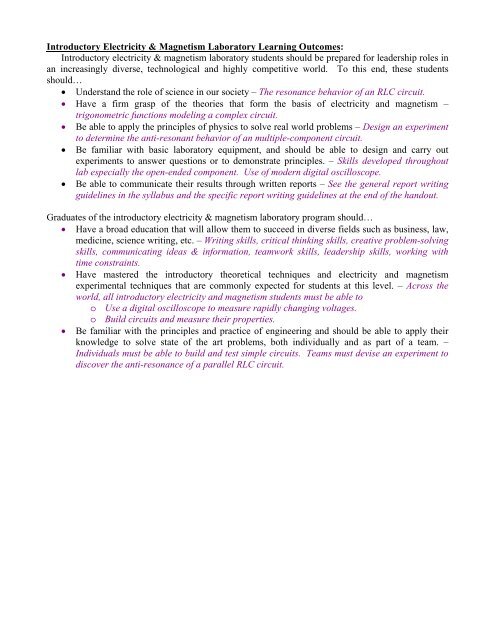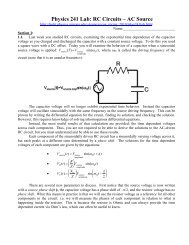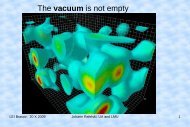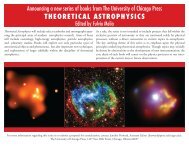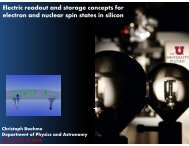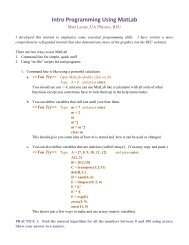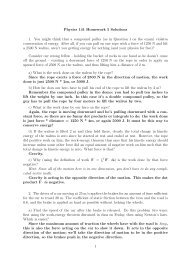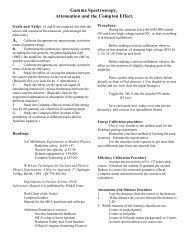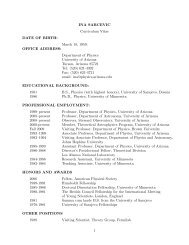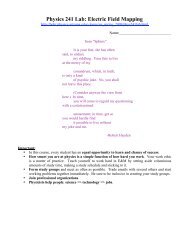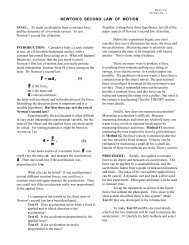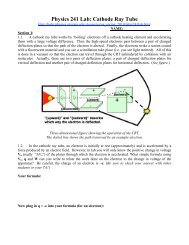Physics 241 Lab: RLC Circuit â AC Source
Physics 241 Lab: RLC Circuit â AC Source
Physics 241 Lab: RLC Circuit â AC Source
You also want an ePaper? Increase the reach of your titles
YUMPU automatically turns print PDFs into web optimized ePapers that Google loves.
Introductory Electricity & Magnetism <strong>Lab</strong>oratory Learning Outcomes:Introductory electricity & magnetism laboratory students should be prepared for leadership roles inan increasingly diverse, technological and highly competitive world. To this end, these studentsshould… Understand the role of science in our society – The resonance behavior of an <strong>RLC</strong> circuit. Have a firm grasp of the theories that form the basis of electricity and magnetism –trigonometric functions modeling a complex circuit. Be able to apply the principles of physics to solve real world problems – Design an experimentto determine the anti-resonant behavior of an multiple-component circuit. Be familiar with basic laboratory equipment, and should be able to design and carry outexperiments to answer questions or to demonstrate principles. – Skills developed throughoutlab especially the open-ended component. Use of modern digital oscilloscope. Be able to communicate their results through written reports – See the general report writingguidelines in the syllabus and the specific report writing guidelines at the end of the handout.Graduates of the introductory electricity & magnetism laboratory program should… Have a broad education that will allow them to succeed in diverse fields such as business, law,medicine, science writing, etc. – Writing skills, critical thinking skills, creative problem-solvingskills, communicating ideas & information, teamwork skills, leadership skills, working withtime constraints. Have mastered the introductory theoretical techniques and electricity and magnetismexperimental techniques that are commonly expected for students at this level. – Across theworld, all introductory electricity and magnetism students must be able too Use a digital oscilloscope to measure rapidly changing voltages.o Build circuits and measure their properties. Be familiar with the principles and practice of engineering and should be able to apply theirknowledge to solve state of the art problems, both individually and as part of a team. –Individuals must be able to build and test simple circuits. Teams must devise an experiment todiscover the anti-resonance of a parallel <strong>RLC</strong> circuit.


